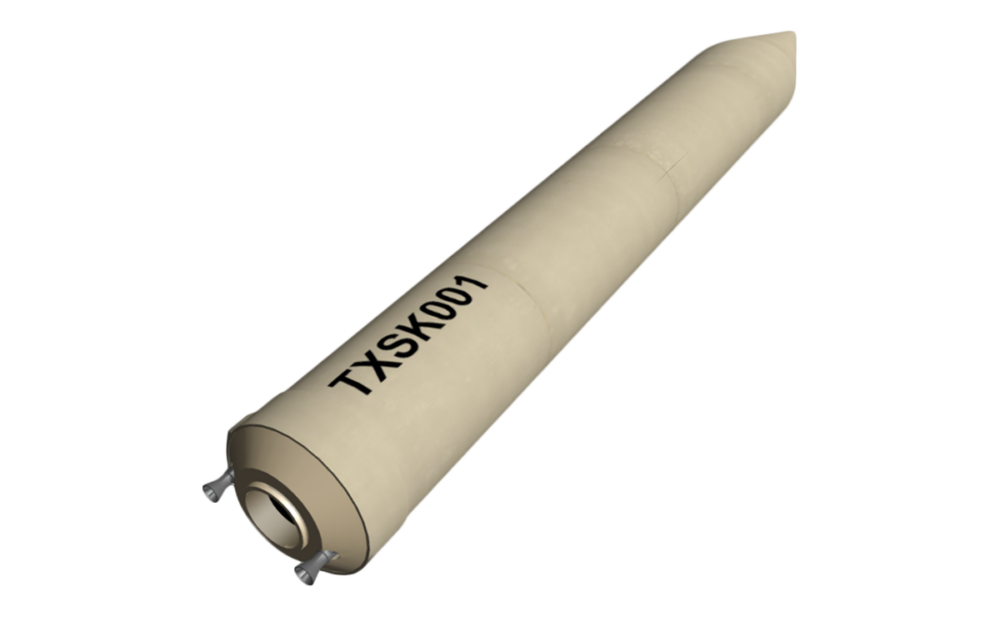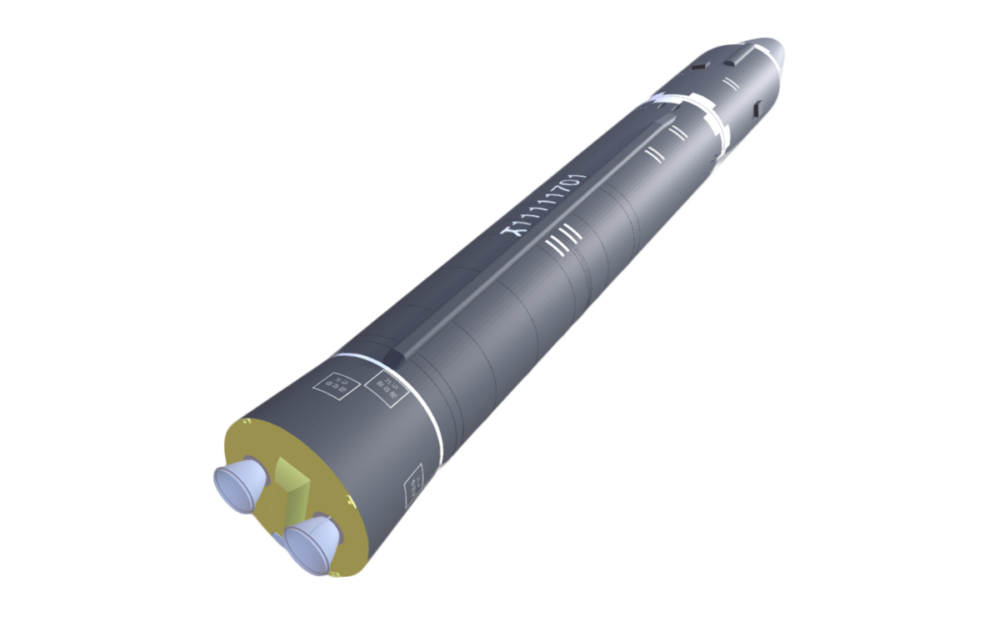
The CNS Iran Missile and SLV Launch Database
Collection of Iranian missile tests including the date, time, missile name, launch agency, facility name, and test outcome. (CNS)
Open source evidence cannot definitively confirm whether the country has any programs for the development of nuclear, chemical, or biological weapons. Myanmar’s regime asserts the country has no such programs. 1
Myanmar, also known as Burma, is a non-nuclear weapon state party to the Treaty on the Nonproliferation of Nuclear Weapons (NPT), and has ratified the Biological and Toxin Weapons Convention (BTWC) and the Chemical Weapons Convention (CWC). 2
Myanmar became a non-nuclear weapon state party to the Treaty on the Nonproliferation of Nuclear Weapons (NPT) in 1992, and signed the Southeast Asia Nuclear Weapon-Free Zone Treaty in 1995, committing not to develop nuclear weapons. The country signed a Comprehensive Safeguards Agreement and a Small Quantities Protocol with the International Atomic Energy Agency (IAEA) in 1995. 3 After President Barack Obama’s visit in November 2012, Myanmar announced it would sign the Additional Protocol. Less than one year later, on 17 September 2013, Myanmar signed the agreement, but has yet to ratify the instrument. 4 Myanmar has also signed, but not ratified the Comprehensive Nuclear Test Ban Treaty (CTBT). 5
Myanmar expressed an interest in nuclear energy for peaceful uses as early as 1955, when the country established an Atomic Energy Centre under the Union of Burma Applied Research Institute (UBARI). 6 It joined the IAEA in 1957, and participated in a number of IAEA technical cooperation projects in isotope applications for agriculture beginning in the 1960s. 7 In 1997, the government established the Department of Atomic Energy (DAE) under the Ministry of Science and Technology; as of 2007, the DAE had 200 employees, of which roughly 25% were trainees. 8
Myanmar’s government has also undertaken some uranium exploration, though the extent and specifics of these activities are unknown. According to the Myanmar Ministry of Energy there are five areas for potential uranium mining: Magwe, Taungdwingyi, Kyaukphygon (Mogok), Kyauksin, and Paongpyin (Mogok). 9 Only Magwe has up to 0.5 percent medium-grade uranium ore while the rest have low-grade uranium ore (less than 0.1 percent). 10 Myanmar has no confirmed mining or milling facilities, despite allegations by dissident groups of the existence of sites near Mandalay. 11 Experts at the Institute for Science and International Security (ISIS) assert, based on independent satellite and photographic imagery analysis, that the facility in question is most likely a cement plant. 12 Most of Myanmar’s uranium is a byproduct of gold mining. As Myanmar does not have a need for uranium, much is exported to China. 13
Myanmar has consistently looked to Russia for assistance increasing its technical capabilities in the nuclear field. In 2001, Russia signed a contract to design a 10 MW research reactor in Myanmar for radioisotope production. 14 Although the deal for a research reactor ultimately fell through, a few hundred specialists from Myanmar have trained in nuclear research in Russia. 15 However, it is unclear whether the government is continuing to send scientists abroad after its decision to sign the Additional Protocol and increase its transparency regarding its nuclear program. In March 2015, Rosatom, Russia’s State Atomic Energy Commission, announced that Myanmar and Russia agreed to cooperate further on nuclear energy development. 16
In May 2010, a pro-democracy dissident group Democratic Voice of Burma (DVB) precipitated considerable international debate about Myanmar’s nuclear program by alleging the existence of covert nuclear and missile facilities, the purchase of machinery for uranium enrichment from Germany, and Switzerland, and illicit cooperation with North Korea. 17 Former IAEA inspector Robert E. Kelley stated that the photographs and documents provided by the former Army Major Sai Thein Win, who had recently defected, led him to conclude that Myanmar’s “technology is only for nuclear weapons and not civilian use or nuclear power.” 18 Kelley further argued, however, that it would be extremely difficult for Myanmar, given its limited technical and financial capabilities, to develop nuclear weapons successfully. 19 However, a number of outside experts were skeptical of the DVB’s and Kelley’s allegations. ISIS, for example, stated the equipment under investigation could alternatively be used for producing “rare earth metals or metals such as titanium or vanadium.” 20
The United States government expresses diminishing concerns about a possible nuclear program in Myanmar, while withholding judgment on whether the country ever undertook activities in violation of its international commitments particularly with regard to trade with North Korea. The U.S. State Department expressed concern about Burma’s NPT compliance in 2011, however in its 2012 compliance report it stated that its concerns “were partially allayed” by 2012. 21 Myanmar’s vice president told a visiting U.S. delegation in 2011 that his country had halted its nuclear research program because the “international community may misunderstand Myanmar over the issue.” 22 Myanmar’s leaders also communicated to the IAEA, “Myanmar is in no position to consider the production and use of nuclear weapons and does not have enough economic strength to do so.” 23 During U.S. Secretary of State Hillary Clinton’s first visit to the country, Myanmar also explicitly denied any cooperation with North Korea, and committed to complying with United Nations Security Council resolutions targeting the DPRK’s illicit activities. 24 As of July 2014, Myanmar announced that it would begin construction of nuclear research reactors once it had obtained the necessary infrastructure and “human resources.” 25
There is no evidence to suggest that Myanmar has ever pursued a biological weapons (BW) program. The country signed the Biological and Toxin Weapons Convention (BTWC) in 1972. 26 In December 2014, Myanmar ratified the BTWC. 27
Myanmar has a limited biotechnology sector. In 2004, Myanmar established a Biotechnology Development Center at Pathein University in collaboration with the National Institute of Technology and Evaluation of Japan. 28 According to the Myanmar Department of Agricultural Planning, the public sector supports most biotechnology activities in Myanmar, including vaccine development for Newcastle disease, as well as detection of viral disease in shrimp in collaboration with the Government of Japan. 29 Myanmar has participated in the development of the ASEAN Framework Agreement on Biosafety. The country is in the process of developing its National Biosafety Framework. 30 Myanmar is not a significant biotechnology exporter, and thus does not participate in or adhere to the Australia Group’s guidelines. 31
Myanmar does not subscribe to the Hague Code of Conduct against Ballistic Missile Proliferation (HCOC). 32 The country possesses a small number of surface-to-air missiles (SAMs) , produced predominantly by Chinese and Russian manufacturers. According to Jane’s, this inventory includes the Hong Ying-5 (红缨五号), 9K38 Igla (9K38 Игла́), and 9K310 Igla-1 (9K310 Игла́-1) man-portable air defense systems (MANPADS); as well as the British Bloodhound Mk2, 2K12 Kub (2K12 Куб), S-125 Pechora-2M (Печора-2M), and the Hongqi-2 (红旗二号) SAMs. 33
North Korea and Myanmar officially resumed diplomatic relations in 2007 after a long period of estrangement. 34 Photographs and a trip report dated November 2008, provided by a Burmese dissident group, show General Shwe Mann (then a leader in Myanmar’s ruling military junta, and currently speaker of the lower house of parliament), meeting with high-ranking North Korean officials. Most notable of the officials is Jon Pyong Ho, (전병호) who, was a leading figure in North Korean nuclear and missile proliferation. 35 The photos also show the Burmese delegation visiting a number of missile-related facilities, Korean People’s Army (KPA) Air Force unit, facilities producing anti-aircraft and radar equipment, and production facilities for Igla SAMs and Scud missiles. 36 The United States has confronted two North Korean ships, which it asserted were en route for Myanmar bearing missiles or missile-related equipment. In 2009, the Kang Nam I turned back after the U.S. trailed it, and in 2011 the M/V Light similarly returned to its North Korean port. 37 In August 2012, Japan seized “50 metal pipes and 15 high-specification aluminum alloy bars” destined for a Yangon-based construction company that is alleged to be a front-company for military procurement. 38 The materials probably would have been used for Myanmar’s short-range missile program. 39 The material was stamped “DPRK,” and transported through China’s port of Dalian near the border with North Korea. 40
Press reports widely allege that other illicit shipments have occurred but successfully evaded interdiction. 41 For example, Myanmar received a shipment of dual-use cylindrical grinders from the Japanese company Toko Boeki in 2008. 42 The items were procured on behalf of a North Korean front company known as New East International, which is controlled by the Second Economic Committee and responsible for military procurement. These items can be used to make magnets for a centrifuge-based uranium enrichment program, or for the gyroscopes of missile systems. Because of their special dual-use nature, their export is controlled under Japanese law. It is unknown if North Korea was attempting to use Myanmar as a transshipment point, or if Myanmar was using North Korea’s network to solicit illicit materials for its own use. 43 In 2013, the U.S. levied sanctions against Lt. General Thein Htay, the head of Burma’s Directorate of Defense Industries (DDI), as well as various other related government officials and private companies, due to their involvement in the North Korea’s supply of arms to Myanmar. 44
Myanmar also has a nascent domestic dual-use research capability in the form of the Myanmar Aerospace Engineering University (MAEU), established in Meiktila in 2002. 45 MAEU’s research includes the design and construction of unmanned aerial vehicles (UAV) and solid propellant rockets. 46
There is no evidence to suggest that Myanmar has a chemical weapons (CW) program, despite many decades of allegations to the contrary by Burmese dissident groups. 47 While the U.S. government voiced suspicions about a possible CW program in the 1980s and early 1990s, Burma has not been named in relevant U.S. compliance reports since 1992. 48 Myanmar is not a signatory to the 1925 Geneva Protocol, but the country has signed the Chemical Weapons Convention (CWC) in 1993. 49 Myanmar ratified the CWC in July 2015. 50
In January 2014, Unity Journal, a weekly news magazine in Myanmar, alleged that the military built a chemical weapons production facility in central Magway district. 51 The Government, while acknowledging the facility is for defense purposes, denied the allegations. CWC ratification would provide the international community mechanisms to clarify issues related to remaining facilities of concern in Myanmar. 52
In 1997 Myanmar adopted Agenda 21, which established an official strategy for sustainable development, including environmental management of toxic industrial chemicals. 53 Myanmar possesses only a limited chemical industry, and imports all toxic industrial chemicals it consumes. 54 As it is not a significant exporter of industrial chemicals or chemical equipment, Myanmar does not participate in or adhere to the Australia Group’s guidelines. 55
Sign up for our newsletter to get the latest on nuclear and biological threats.
Collection of Iranian missile tests including the date, time, missile name, launch agency, facility name, and test outcome. (CNS)
Information and analysis of nuclear weapons disarmament proposals and progress in the United States.
A collection of missile tests including the date, time, missile name, launch agency, facility name, and test outcome.
